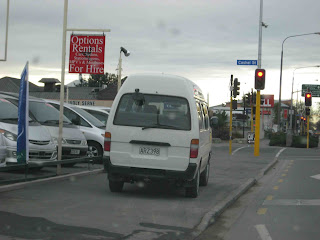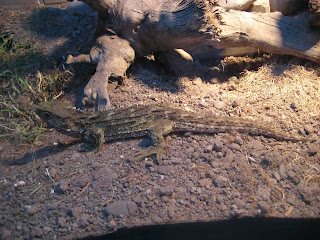Thursday, August 4, 2011
P.S.S. Solid Gold!
Just in case you are missing those hits of the 1960s and 70's, here is the link for Solid Gold FM so that you can hear those familiar Gatorwaka sounds via live streaming. Enjoy!
P.S. Survey Answers
WHAT IS THE HUMAN POPULATION OF NEW ZEALAND'S SOUTH ISLAND?
There are one million people living on the South Island of New Zealand.
HOW MANY SHEEP ARE ON THE SOUTH ISLAND OF NEW ZEALAND?
There are 14 million sheep on the South Island of New Zealand.
The most abundant mammal on the South Island of New Zealand is the brush tail possum (70 million possums). The only mammals native to New Zealand are a few bat species.
In contrast, 18 Million people live in the State of Florida.
Thursday, August 4th - Safe Travels!
Our class left this afternoon for the long flights back to Florida with a few stopping off in Australia before making their way across the Pacific. May all the journeys home be safe and not too tiring!
Scott, let us know if your Hillyer's pie made it. ; )
Scott, let us know if your Hillyer's pie made it. ; )
Wednesday, August 3, 2011
August 4 - Special Pictures from Tupelo
Tupelo wanted our students to have her drawings of what she observed you doing when you had your first "class" together over here doing low ropes exercises together:
Students in the "Traffic Jam"
Students in the Gordian Knot
"Congratulations! You are a star!" Students got out of the Gordian Knot
And, P.S. Jamm reminds you to listen to the "Plant Song" that he made for you that it is at the end of the slideshow. Enjoy!
Thursday, August 4th - The Journey Home and Beyond
Our Iwi
Kia Ora. Having been immersed in Kiwi and Maori culture for the past five weeks will make the journey back to American culture another adventure. Our students will take with them lasting memories of the challenges and opportunities of what not only New Zealand faces, but what the rest of the world faces as well. Preserving biological diversity, conserving resources, and maintaining a balance between natural and human built environments are key to a sustainable future. And, it will take all of us with our diverse backgrounds to come together in many different ways to help make lasting change for a bright future.
Dear students, we hope that what you have experienced with us in New Zealand will help shape the decisions you make for our future in exciting and positive ways. We thank you for giving of yourselves openly with your hearts and minds so that our time together could be such a special learning opportunity for us all. We have really enjoyed being with all of you, touring the wop-wops, and sharing a daily cuppa. Sweet As!
From the land of the long white cloud, safe and happy travels! See you in the land of the flowers (La Florida). With a Hongi and hug to each of you, m&m
Wednesday, August 2 - A time of celebration and good memories
While it was a free day, much of it was spent finishing course journals and the slide show and preparing for the last get together at night in nearby Prebbleton. We gathered together the students, lecturers, and friends - all essential in making our adventures successful and fun! With thanks, we celebrated our time together and enjoyed the slide show of our New Zealand experience. Collectively, we took over 10,000 photos in the past few weeks. Some of us took over 1,000 in just one day. Needless to say, creating a slideshow that captured the essence of our special time together is daunting. We chose to go with basics and a few good laughs (like warm up exercises, reminders of killer-attack Weta, salt and pepper shakers, etc.) sprinkled in. And, we had an extra special glipse of a place few humans ever see/set foot -- Campbell Island. Colin brought along a slide show of his remarkable summer adventure on this farthest south island of NZ. Campbell Island is also the inspiration for the artwork on the Kiwi $5 bill. You can learn more and see some of the wondrous plants and animals of this place (including the New Zealand Snipe) here.
Not wanting to think about going home, we relived memorable times together over the last five weeks. Again, special thanks to our students for diving into our adventures with great enthusiasm, our guest lecturers for sharing their time and expertise, and our friends and families for their support. Thanks also to our students for the special Koha treasures - very thoughtful and special. Our time together, will be cherished.
Monday, August 1 - Hanging out with the Kiwis (finally!)
X-ray of Kiwi with egg inside.
Monday afternoon we experienced Willowbank Reserve. Willowbank cares for New Zealand wildlife that occurs both naturally in the country as well as species that are part of the country's history (i.e., species that were introduced by colonists over time). Some of these species are domestic such as chickens and horses, others have become pest species such as wallabies and possums. The park seeks to educate residents and visitors as to the heritage and challenges New Zealand's animal species bring to the table. Our tour also included native New Zealand species where we saw our first Tuatara, Kiwi, Takahe, and Morepork. Tuatara
Takahe
(Here is what Henry, a 111-year old Tuatara that lives in Invercargill, looks like:)
We also got to size up the extinct animals of New Zealand that roamed this wondrous place not too long ago.
Katie and Emily with an "actual size" Moa sillhouette. These were hunted to extinction in relatively recent history.
An additional tour was to experience Ko Tane - a Maori cultural performance. Matt got to be our chief and made sure to let the Maori Village know that we came in peace by accepting their offering and performing a proper Hongi.
We all had a wonderful time, and our gals got to give Poi a go and
our guys got to give the haka a go as part of the show.
Experiencing the strong and beautiful singing voices of the women and men, watching them twirl poi and throw sticks, and seeing a true Haka were, again, amazing experiences.
Following our tours we had dinner at a new restaurant in Lincoln, No. 6, and had a chance to thank Colin, Tupelo, Jamm and Meryl for their assistance with the course, and of course, the students for their enthusiasm and sense of adventure for making the course a success!
Colin, our honorary Gator!
Tuesday, August 2, 2011
Monday, August 1 - Day trip to Kaikoura
It is a pity that our trip to the Marae in Kaikoura had to be cancelled because of the flights being cancelled out of Queenstown last weekend. Despite this schedule change, a day trip to Kaikoura, located on the Pacific coast three and a half hours north of Christchurch, was on tap for today. One word that could be used for what we did get to see today? Magical...
We stopped in Chevoit for tea and then went on to search for honey dew honey in the beech forests along the roadside.
After, we visited the Ohua seal colony. Then a surprise for the students -- a short hike just 10 minutes inland to a waterfall we know is used as a safe place for the baby seals this time of year. Needless to say we are all captivated by their antics. The New Zealand Fur Seals are a protected species.
The afternoon was spent sampling whitebait and on a hike on the spit near the bay. There we learned of the Hutton's shearwater project where a predator-free colony is being established to help ensure survival of this bird species that has only two breeding locations left in all of New Zealand.
We had dinner out in Kaikoura and then headed back to Lincoln. On the way back we stopped at the forest again to look at the stars and we were lucky, we actually heard a Morepork.
Cheers, Mark
We stopped in Chevoit for tea and then went on to search for honey dew honey in the beech forests along the roadside.
After, we visited the Ohua seal colony. Then a surprise for the students -- a short hike just 10 minutes inland to a waterfall we know is used as a safe place for the baby seals this time of year. Needless to say we are all captivated by their antics. The New Zealand Fur Seals are a protected species.
We had dinner out in Kaikoura and then headed back to Lincoln. On the way back we stopped at the forest again to look at the stars and we were lucky, we actually heard a Morepork.
Cheers, Mark
Subscribe to:
Posts (Atom)





















